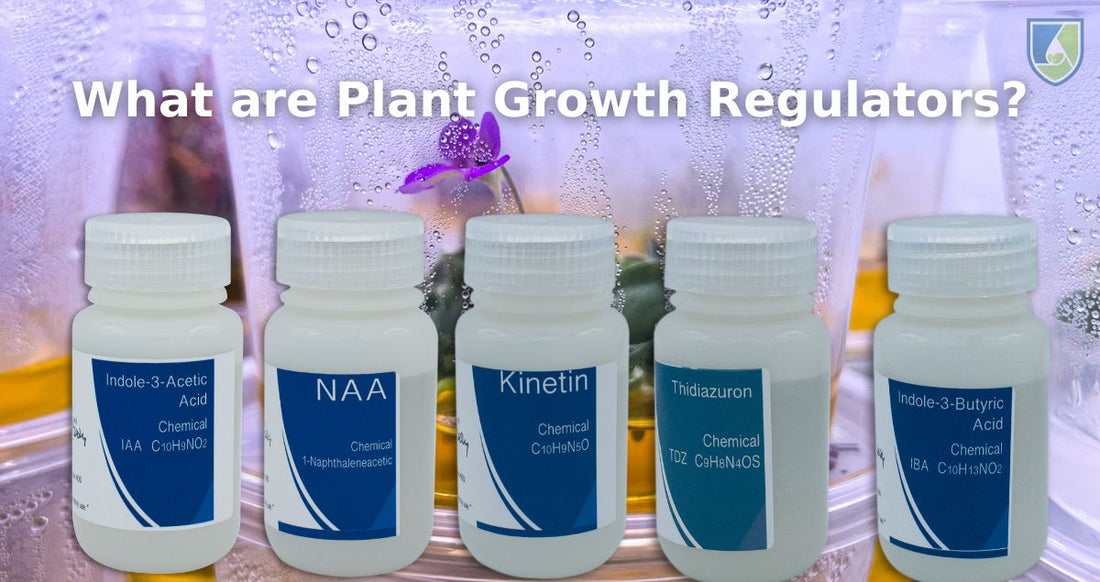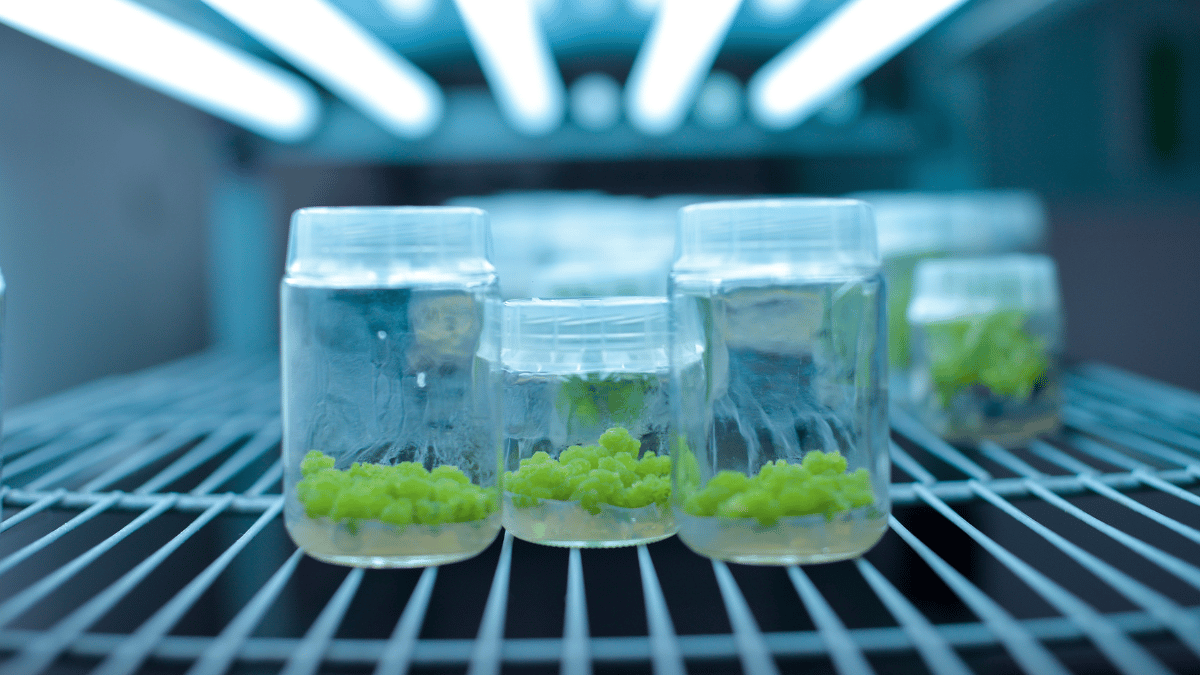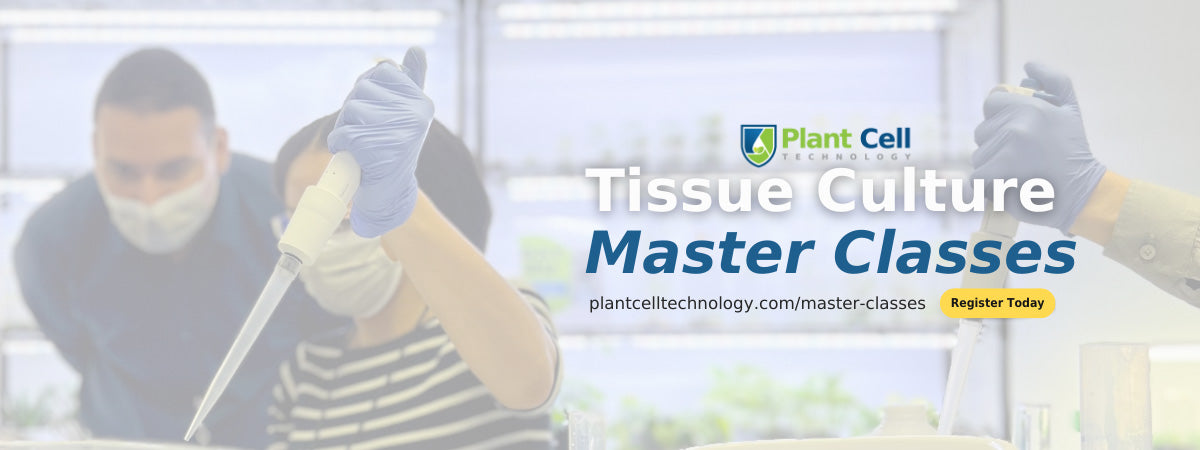
What Are Plant Growth Hormones?
As a content and community manager, I leverage my expertise in plant biotechnology, passion for tissue culture, and writing skills to create compelling articles, simplifying intricate scientific concepts, and address your inquiries. As a dedicated science communicator, I strive to spark curiosity and foster a love for science in my audience.


Introduction
Plant growth hormones refer to naturally occurring organic substances that, at low concentrations, influence the physiological processes of plants. These substances are alternatively known as plant growth regulators (PGRs) or phytohormones.
These hormones govern cell division and elongation, regulate seed germination, influence the growth of roots and shoots, control flowering and fruit development, and contribute to tropic responses and stress adaptation in plants. Additionally, they play a crucial role in senescence, defense mechanisms against environmental threats, and the abscission process.
You may hear about different types of plant growth regulators: cytokinins, auxins, abscisic acid, and gibberellins. Out of these, auxins and cytokinins, or more specifically, the balance between the two, are important for organ development in tissue culture plants.
In this article, we cover all about different types of plant growth hormones, their functions, and which plant hormones have applications in growing plants in tissue culture environments.
What Are Plant Growth Regulators?
Plant growth regulators, commonly known as plant hormones or phytohormones, are indispensable signaling molecules that orchestrate a myriad of physiological processes in plants. These regulators, whether naturally produced within the plant or introduced synthetically, play a pivotal role in shaping the growth, development, and responses of plants to their ever-changing environments. The five primary classes of plant hormones—auxins, gibberellins, cytokinins, abscisic acid, and ethylene—each hold specific responsibilities in governing cellular activities.
The significance of plant growth regulators extends beyond mere control; they are the conductors of a symphony that ensures plants adapt, grow, and thrive in their surroundings.
Different types of plant growth regulators have different chemical compositions. For example, gibberellic acid is a terpene, while abscisic acid is a carotenoid derivative. Further, based on their action the plant growth hormones are categorized in two groups:
Plant Growth Inhibitors: Chemicals like abscisic acid (ABA) are classified as plant growth inhibitors. ABA inhibits growth, induces seed dormancy, and promotes processes such as abscission, contributing to the shedding of leaves and fruits.
Plant Growth Promoters: Chemicals like auxins, cytokinins, and gibberellins are categorized as plant growth promoters. These substances play crucial roles in promoting seed formation, fruiting, and flowering, as well as processes like cell enlargement and division, actively contributing to overall plant growth and development.
Some hormones can exhibit dual functions, acting as both growth inhibitors and promoters. However, the dominance of a specific function depends on the circumstances. Take ethylene, for instance, which is primarily known as a growth inhibitor but can also serve as a growth promoter in certain situations.
Plant Growth Regulators Used In Tissue Culture Applications

The three hormones widely used in tissue culture are auxin, cytokinin, and gibberllins.
Auxins:
Auxins were discovered by Charles Darwin and Francis Darwin. They represent the first growth hormones ever identified, with the Darwins observing how canary grass exhibited phototropism, growing towards light. Upon closer examination, it became evident that the tip of the protective sheath, known as the coleoptile tip, bent towards the light source. F.W. Went further solidified this discovery by isolating auxins using the sheath tips of oat seedlings.
What do Auxins do?
- Assist in initiating root development in stem cuttings
- Promote flowering
- Inhibit premature fruit and leaf shedding
- Enhance the natural abscission of old leaves, fruits, or flowers
- Assist in cell division
- Balance and regulate xylem differentiation
Auxins Used In The Tissue Culture Application
Plants produce natural types of auxin: Indole butyric acid (IBA) and Indole-3-acetic acid (IAA). These auxins are typically produced in the roots and stems of plants. If you want to add auxins to your plant, you should look for synthetic auxins like 2, 4-dichlorophenoxyacetic (2, 4-D) and Naphthalene acetic acid (NAA).
- 1-Naphthaleneacetic Acid (NAA): This is utilized to enhance overall plant growth. Its applications include breaking dormancy and apical dominance, shortening internodes in plants like apple trees, preventing abscission, promoting uniform flowering and fruit ripening (e.g., in pineapples), and serving as a crucial ingredient in various commercial plant-rooting horticultural products.
- Indole-3-Butyric Acid (IBA): Belonging to the auxin family, this plant hormone is employed in agriculture and tissue culture to foster the growth of plant roots. Its applications extend to initiating the formation of adventitious roots in cultured tissues, stimulating callus development, and is considered a precursor of indole acetic acid (IAA).
Cytokinin
Another pivotal growth hormone, cytokinin, is predominantly produced in areas where cell division occurs, primarily in a plant's roots and shoots. Cytokinins play a multifaceted role in plant development, contributing to the production of new leaves, stimulating lateral shoot growth, and enhancing leaf longevity.
What do Cytokinins do?
- Disrupt bud and seed dormancy
- Delay aging of flowers and leaves
- Induce cell division in mature tissues (applied in tissue culture)
- Stimulate lateral bud growth
- Promote cell division
- Overcome apical dominance
- Stimulate lateral shoot growth
- Assist in forming new, healthy leaves
Traditionally used in conjunction with auxin, cytokinin facilitates root and shoots development. Initially observed on tobacco leaves, where cell proliferation depended on the presence of auxins and yeast, it was later identified as Kinetin. While Kinetin is not a natural hormone, plants produce their own cytokinins, primarily in the root apexes and developing shoots.

Cytokinins Used In The Tissue Culture Application
Cytokinins occurring naturally are exclusively derived from purines. However, synthetic purine-derived cytokinins, such as kinetin, zeatin, and 6-benzylaminopurine, exist. Additionally, there are synthetic phenylurea-derived cytokinins like diphenylurea and thidiazuron. Among the naturally occurring cytokinins, zeatin and 2iP (2-isopentenyl adenine) find applications in plant tissue culture.
- Benzylaminopurine (BAP): This synthetic cytokinin, a plant growth regulator, fosters plant development in growth media. Its applications include influencing growth, inducing blossoms, and enhancing fruit yield by stimulating cell division. Additionally, it modifies MS media for shoot initiation, stimulates seed germination, and seamlessly supplements various culture media such as MS, Gamborg’s, and Chu’s N6.
- Kinetin: This synthetic cytokinin, added to growth media with auxins like Murashige and Skoog media, stimulates cell division, promoting robust plant growth. It is versatile, inducing callus development and initiating shoots in later stages, making it a key component for shoot induction and proliferation in plant tissue culture.
Gibberellins
In 1926, Japanese scientist Eiichi Kurosawa isolated gibberellins from the fungus Gibberella Fujikuroi while investigating the "foolish seedling" disease in Oryza sativa. These tetracyclic diterpenes, characterized as approximately 136 types (GA1, GA2, GA3...GAn), are synthesized from glyceraldehyde-3-phosphate in the young tissues of the shoot and developing seed.
Among them, only a few serve as bioactive hormones, promoting the growth of various plant species such as Zea mays, Sesamum indicum, Pennisetum glaucum, and Avena sativa. Gibberellins are transported within plants through the xylem or phloem.
What do Gibberellins do?
- Induces hyper-elongation of stems through cell division and elongation (GA1).
- Promotes stem elongation in response to prolonged daylight.
- Facilitates germination in seeds requiring cold or light.
- Stimulates enzyme production during cereal grain germination.
- Induces maleness in dioecious flowers.

Gibberellins Used In The Tissue Culture Application
Gibberellins serve as pivotal components in tissue culture, contributing significantly to the induction of de novo regeneration and playing essential roles in shoot organogenesis, somatic embryogenesis, and callus regeneration. These functions highlight their importance in promoting the growth and development of plant tissues in controlled culture environments, making them valuable tools in various applications of plant tissue culture techniques.
Your One-Stop Shop For All Things Plant Tissue Culture
Revolutionizing the industry, Plant Cell Technology offers a range of exceptional products and services to optimize your workflow. Our store features essential items, including all essential plant growth hormones, MS media, agar, gellan gum, Plant Preservative Mixture™ (PPM™), culture vessels, and Biocoupler™, as well as additional supplies like masks.
Beyond providing materials, our consultation services aim to deliver instant solutions to your tissue culture challenges. If you're seeking expertise to enhance your skills, our tailored tissue culture master classes provide comprehensive learning directly from the experts.
These courses encompass a wide range of topics, covering fundamental concepts and hands-on experiences, such as explant and media preparation, multiplication, rooting, and acclimation of plants.
Additionally, the curriculum includes advanced techniques like shoot apical meristem and synthetic seed production, ensuring a comprehensive learning experience to make you proficient in the industry. Taught by tissue culture experts with 10-30 years of experience, our masterclasses not only educate on tissue culture concepts but also share personal success and failure stories, providing valuable insights for your journey.
Ready to advance your tissue culture skills? Waste no time and enroll in your preferred tissue culture master class today to enhance your expertise in the field!
Blog Categories
View by Level
Popular Blogs

Callus Culture: Definition and Applications
Introduction Tissue culture is not just one technique! Yes, you heard right! As you know, tissue culture is an advanced...
Read More
6 Plant Tissue Culture Books to Keep Learning
Introduction Most of us are fans of books when it comes to learning a topic in detail and in a...
Read MoreSubscribe to Our Newsletter










Join the conversation
Your email address will not be published. Required fields are marked